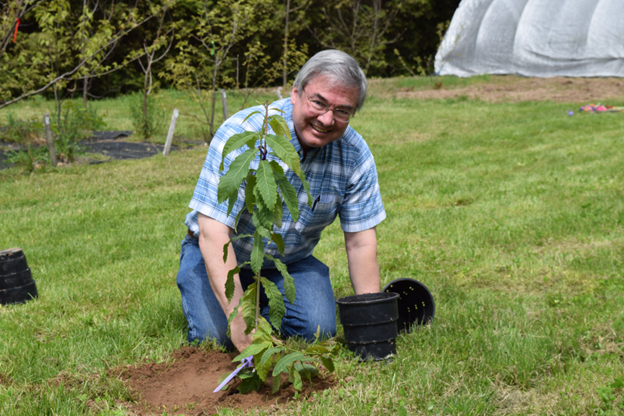THE AMERICAN CHESTNUT PROJECT
Support the Project
We work in a not-for-profit model in order to promote the restoration of this ecologically important keystone species to our forests. We are not patenting the blight resistant American chestnut trees so that once we have regulatory approval, all people will be able to propagate them for personal or restoration use. This will be a long restoration project and we will need your help. Your donation goes towards funding our research and development as well as our efforts to produce more blight-tolerant trees for restoration. Each donation counts.
Our Supporters
Our support comes from
Donations from individuals like you: Make a Secure Online Donation to the American Chestnut Fund!
New York Chapter of The American Chestnut Foundation
10,000 Chestnut Challenge crowdfunding campaign
Templeton World Charity Foundation
USDA NIFA BRAG program
Camp Fire Clubs of America
Weyerhaeuser New England
Lions Club of Chittenango, NY
USDA NIFA BRAG program
The Forest Health Initiative (FHI)
ArborGen LLC
The Consortium for Plant Biotechnology Research (CPBR)
The American Chestnut Foundation
Institute of Forest Biotechnology
Wildlife Mississippi (Mississippi Fish and Wildlife Foundation)
The National Hardwood Lumber Association
Wild Turkey Federation
Northern Nut Growers Association
The G. Unger Vetlesen Foundation
USDA CREES competitive grants (now NIFA)
USDA McIntire-Stennis formula funds
New York State Foundation for Science, Technology and Innovation (NYSTAR)
New York State Legislature: New York State American Chestnut Research and Restoration Project, sponsored by Senator Mary Lou Rath
Plant Chestnuts, Be a Citizen Scientist
While you wait for our blight-tolerant, transgenic trees to become available, we suggest that you plant wild-type (non-transgenic) American chestnuts. There are many benefits to planting wild-type American chestnuts. First, although they are susceptible to the blight, these trees will still provide many benefits to the local ecosystem during their lifetime. Second, planting wild-type trees is a good way to test site conditions before you plant the more valuable transgenic trees. If your wild-type trees thrive, your blight-tolerant trees will thrive alongside them for years to come. Lastly, once your wild-type chestnuts reach flowering age, you can use them as “mother trees” by pollinating them with pollen from our transgenic trees to produce blight-tolerant nuts. We will be able to distribute pollen from our trees, in addition to seeds, seedlings, and other plant material, once we receive federal regulatory approval.
If you currently have flowering American chestnuts on your property, you can participate in our citizen scientist pollination effort as well. Watch our virtual pollination workshop to learn more about identifying female flowers and about the controlled pollination procedure. We encourage you to only attempt to pollinate flowers that you can reach safely. By participating, you aid us in our goal to preserve the surviving genetic diversity of the American chestnut population and to build a genetically diverse population of blight-tolerant trees. To learn more about how you can participate in our citizen scientist pollination program, please email [email protected].

